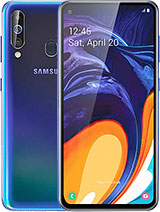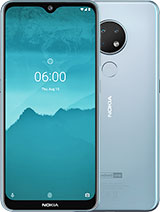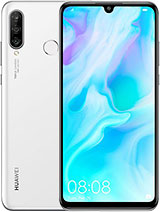Xiaomi Redmi Note 8 Pro review

Competition
There are quite a few options that show up when searching our database with similar pricing and screen size. However, only a few stand out and even fewer that we've reviewed. And still, the Redmi Note 8 Pro has all that it takes to stick out with a quad-camera setup and the brand new Helio G90T SoC onboard. Not many can offer optimized gaming experience on a budget.

The first two options that spring to mind are the Samsung Galaxy A50 and A60. Since Samsung's Galaxy A-lineup is far-reaching, the Redmi Note 8 Pro was bound to fight one of Samsung's mid-range offerings.
However, neither of them make a good case over the Redmi Note 8 Pro. The latter offers better build quality, better all-around camera experience, and killer battery life. Perhaps only the Galaxy A50 could be considered over the Redmi since it has a big Super AMOLED panel that's hard to ignore.



Samsung Galaxy A50 • Samsung Galaxy A60 • Nokia 6.2
The Nokia 6.2 is a viable and up-to-date option for the same price. It has the looks, it has the same cameras minus the macro and rocks a competent LCD with HDR10 support. The Note 8 Pro fights back with a bigger battery and considerably more powerful, recent, and efficient SoC. The Nokia 6.2's Snapdragon 636 just doesn't cut it in 2019.
A similarly-priced solution from Huawei's camp would be the P30 Lite - the budget version of this year's flagship P30. But don't let the flagship name fool you because there's nothing that the handset can do that the Note 8 Pro can't. Xiaomi's offering excels in battery life, performance, display brightness, and also offers arguably better camera experience all-around. The differences aren't all that prominent, though, so it all boils down to which user interface you prefer. Both handsets can be found at a matching price in most markets.
And finally, the direct rival from Realme - the Realme XT. On paper, both phones are pretty similar - identical quad-camera array on the back, big batteries, competent SoCs, and similarly-sized screens. Nevertheless, the Realme XT has one considerable advantage over the Redmi - the OLED panel with under-display fingerprint reader and the faster 20W VOOC charging are features that make a compelling case. Whereas in the other corner, the Redmi offers longer battery life and clearer low-light photos, especially with the Night mode on. During the day, the Redmi has a slight edge over the XT with sharper images.

There are some trade-offs for both models, and it depends on what you are looking for. This comparison is valid only if you are lucky enough to live in a region where both phones are on the market since the Realme XT is a rather exotic handset, and it's held back by limited market availability. It's how Realme rolls.
Verdict
For yet another year in a row, the Redmi Note Pro lineup brings a phone which is super easy to recommend. It's a true "bang for the buck" kind of midranger and leaves almost nothing to complain about. Sure, the Realme XT has a banging OLED panel for the same price with arguably more convenient in-display fingerprint reader, but the Note 8 Pro's screen isn't bad either. It's bright, it's crisp, and the only things that could use some improvement is its color accuracy, which may not be an essential point for many of the prospective buyers.

Other than that, the Redmi Note 8 Pro checks all the boxes with superb battery life, excellent performance on the cheap with the Helio G90T on board, and once again excellent camera performance if you don't count the macro and the ultra-wide lenses. Also, the 64MP sensor is capable of some surprisingly good 2x zoom photos eliminating the need of a cheap telephoto lens.
The solid build and the use of Gorilla Glass 5 is a bonus if you can live with the big camera bump and the few extra grams. It's a hefty device for the screen size - there's no denying that.
Pros
- Robust design with dual Gorilla Glass 5 panels.
- Bright LCD panel.
- The brand new MediaTek Helio G90T is snappy and efficient at the same time.
- Outstanding battery life.
- The main 64MP sensor is versatile and delivers excellent images at day and night.
- The selfie camera is also pretty good.
- Great video recording quality overall.
- Supports USB PD charging, comes with USB-C to USB-C cable and appropriate charger in the box.
Cons
- The macro and ultrawide cameras are uninspiring to say the least.
- Video recording in 1080p leaves more to be desired.
Reader comments
- Raj
- 20 Sep 2024
- Dkh
Can I streame video to a big screen as like monitor with HDMI cable? Can it deliver video output?
- Leodis
- 28 Jan 2024
- ucF
I should add to my last comment. Why do I use earbuds with my HiFi? It is because I have a hearing loss, and my earbuds have an app which allows me to customise the frequency profile I receive, using a graphic equaliser. So a good audio phone is ve...
- Leodis
- 28 Jan 2024
- ucF
I am mostly satisfied with the phone, but disappointed in the lack of further updates. My one big criticism relates to something your reviews never appear to mention about almost every phone - that is the audio capability. With the massive use of ea...

